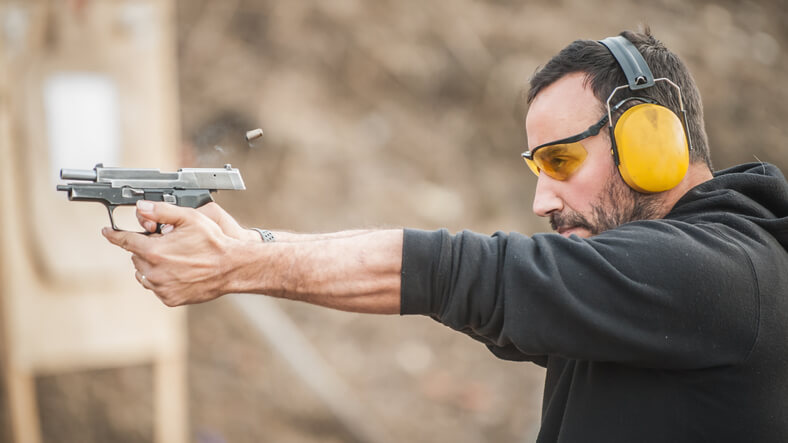Why You Should Train With Different Shooting Positions
May 18th 2020

When talking about shooting stances, most trainees are familiar with standing positions, such as the weaver stance for handgun-shooting or the hasty sling for rifles. But, while these are certainly common and useful, especially among beginners, there are dozens of tried-and-tested positions to choose from. Ultimately, the ideal shooting stance will largely depend on the type of firearm used, the type of cover available, and the shooter’s strength and flexibility.
Take your firearms training to the next level and practice switching to the following shooting positions next time you hit the range. Want to steady your aim and improve your concentration even further? Browse through our wide range of tactical training courses, designed to boost your quick-time response and critical-thinking skills, and contact us today to enroll.
Isosceles Stance
The isosceles stance used to be the standard for police academies all over the world — and with good reason. Most gun-trainees find the position very natural and comfortable. To aim in an isosceles stance, face the target squarely with your feet set shoulder-width (or slightly-wider) apart. Your toes should be aligned and facing the target. Flex your knees to a comfortable angle, lean slightly forward from the waist towards the target, extend your arms, and point towards the target. Your arms and chest should form an isosceles triangle, hence the name.
Weaver Stance
The weaver stance has become increasingly popular (so much so, in fact, that it has replaced the isosceles stance as the standard for police-academy trainees). To aim in a weaver stance, face your target while holding the pistol with both hands. Place your support-side foot slightly forward (about 8–10 inches) with your toes pointing at the target. Your strong-side foot should point 45 degrees to the side. Push forward with your strong hand while keeping your elbow slightly bent. Pull back with your support hand and keep the support elbow at a 45-degree angle. Your support shoulder should be leaning forward, and your strong shoulder should be pulled back.
Power Point
Contrary to the other two handgun-shooting stances on this list, this one is not a two-handed position. Instead, it is a one-handed position developed for increased shooting speed. To stand in a power point position, place your strong-side shoulder and foot forward while pointing towards your target. Your support-side shoulder and foot should hang back, with your torso at 45 degrees from the target. Point the gun at the target with your elbow slightly bent and squeeze the muscles in your support-side arm to prepare for the recoil.
There are many more positions for both handgun and rifle shooting — all with their own pros and cons. To learn more about shooting stances, enroll in one of our gun training courses today!




